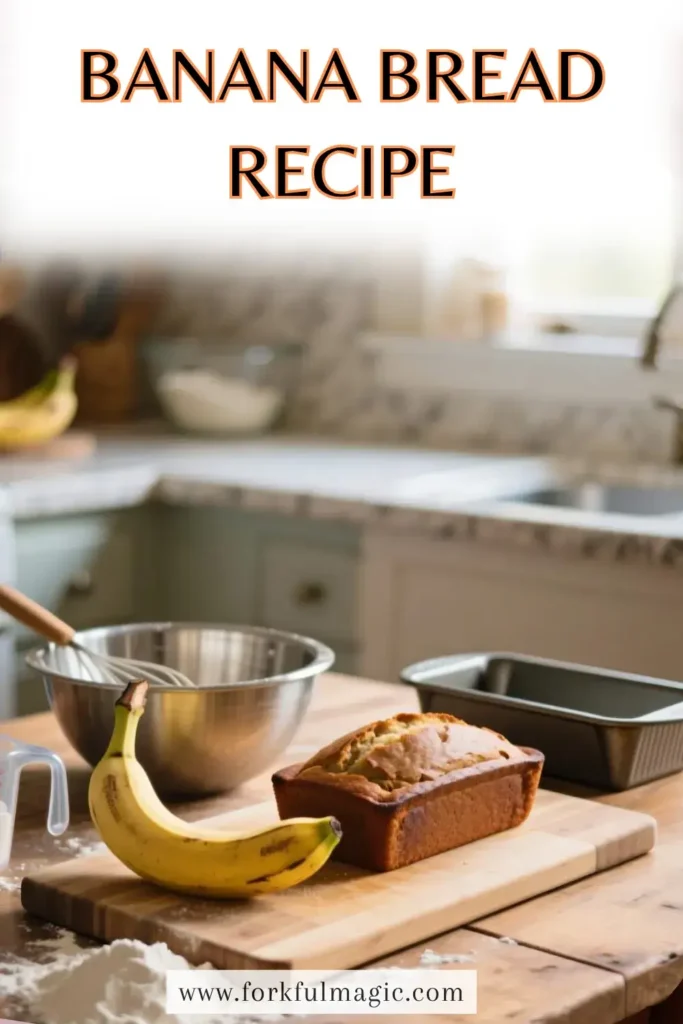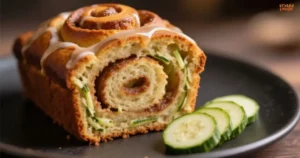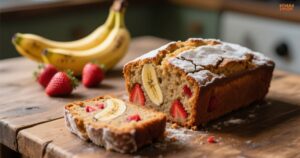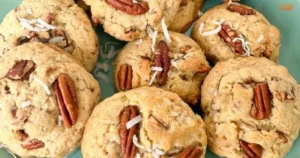Banana bread holds a special place in many kitchens. I remember the first time I baked it; the aroma filled my home, wrapping me in warmth and nostalgia. It was a rainy afternoon, and the bananas were overripe, begging for transformation. That’s the beauty of banana bread—it’s forgiving, versatile, and downright delicious.
So, what makes this banana bread recipe stand out? It’s not just about mashing bananas and mixing ingredients. This recipe incorporates unique techniques and quality ingredients that elevate it to something truly special. The blend of flavors, textures, and the science behind baking will turn your simple loaf into a masterpiece.
Ingredients & Substitutions
Let’s gather our ingredients. Here’s what you’ll need:
- 3 ripe bananas (the browner, the better)
- 1/3 cup melted butter
- 1 teaspoon baking powder
- 1 teaspoon baking soda
- Pinch of salt
- 3/4 cup sugar (you can reduce this if you like it less sweet)
- 1 large egg
- 1 teaspoon vanilla extract
- 1 1/2 cups all-purpose flour
Substitutions and Ingredient Insights
You might have dietary restrictions or prefer alternatives. Here are some substitutions:
- Butter: Use coconut oil or vegetable oil for a dairy-free option.
- Sugar: Honey or maple syrup can sweeten your loaf. Just reduce the liquid slightly.
- Flour: Whole wheat flour or almond flour can be used, but be mindful of the texture.
- Egg: Flaxseed meal (1 tablespoon mixed with 2.5 tablespoons water) can replace an egg for a vegan option.
Choosing quality ingredients matters. Ripe bananas are sweeter and more flavorful. Overripe bananas with brown spots are ideal, as they provide natural sweetness and moisture.
Step-by-Step Instructions

Now, let’s dive into the process.
- Preheat the Oven: Set it to 350°F (175°C). This gets the baking party started right.
- Mash the Bananas: In a large bowl, mash those ripe bananas with a fork until mostly smooth. Leave a few small chunks for texture.
- Mix in Butter: Stir in the melted butter. This adds richness to the bread.
- Combine Dry Ingredients: In a separate bowl, whisk together the baking powder, baking soda, salt, and flour.
- Add Sugar and Egg: Stir in the sugar, egg, and vanilla extract to the banana mixture until just combined.
- Blend Wet and Dry: Gently fold the dry ingredients into the wet mixture. Don’t overmix; a few lumps are okay.
- Pour into a Loaf Pan: Grease your pan or line it with parchment paper for easy removal.
- Bake: Pop it in the oven for 50 minutes or until a toothpick comes out clean.
Common Mistakes and Tips
- Overmixing: This can lead to a dense loaf. Mix just until combined.
- Underbaking: Keep an eye on that time. If the top is browning too fast, cover it with foil.
- Too Much Sugar: Adjust according to your taste. You can always add more but can’t take it away.
Variations
Feeling adventurous? Try these variations:
- Nutty Banana Bread: Add chopped walnuts or pecans for a delightful crunch.
- Chocolate Chip Banana Bread: Toss in some semi-sweet or dark chocolate chips for a decadent twist.
- Spiced Banana Bread: A teaspoon of cinnamon or nutmeg can add warmth and depth.
Cooking Techniques & Science
Understanding the science behind baking can elevate your banana bread.
Why Use Ripe Bananas? The ripening process breaks down starches into sugars, enhancing flavor and moisture. The more brown spots, the sweeter and more flavorful they’ll be.
Baking Soda vs. Baking Powder: Baking soda needs acidity to activate, while baking powder has it included. This recipe uses both, giving your bread a nice rise and a tender crumb.
The Role of Eggs: Eggs provide structure and moisture. They also help with the rise. If you opt for a flax egg, the texture may vary slightly.
Tools Matter: A good quality loaf pan can make a difference in even baking. Dark pans may cook faster, so adjust your time accordingly.
Serving & Pairing Suggestions
Once your banana bread cools, it’s time to serve. Here are a few ideas:
- Presentation: Slice it nicely and serve on a wooden board. A sprinkle of powdered sugar on top adds a nice touch.
- Pairings: Enjoy it with a spread of cream cheese or butter. A dollop of yogurt on the side works wonders too.
- Beverage Suggestions: Pair it with a warm cup of coffee or tea for a cozy afternoon.
Conclusion
Banana bread is more than just a recipe; it’s a canvas for creativity. Each loaf tells a story, inviting you to experiment and make it your own. The key takeaways are simple: use ripe bananas, don’t overmix, and enjoy the process.
For those facing issues, remember that practice makes perfect. If your loaf doesn’t rise as expected, check your baking soda’s freshness.
FAQs
1. Can I freeze banana bread?
Yes! Wrap it tightly in plastic wrap and foil, then freeze for up to three months. Thaw it at room temperature before serving.
2. How can I tell if my banana bread is done?
A toothpick inserted into the center should come out clean. If it’s wet, give it a few more minutes.
3. Can I add other fruits?
Absolutely! Blueberries, cranberries, or even apples can add a unique twist to your banana bread.
4. Why did my banana bread turn out dense?
This often happens due to overmixing the batter or using too much flour. Measure carefully and mix gently.
5. How long does banana bread last?
It can last about 3-4 days at room temperature, or longer in the fridge. Always store it in an airtight container to maintain freshness.
With this banana bread recipe in your culinary arsenal, you’re ready to impress friends and family. So grab those bananas, and let’s get baking!








